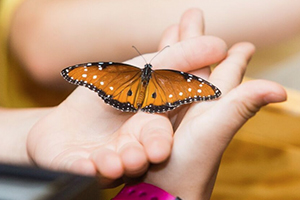Coati Naming Contest
Entries are now closed. The winning name for our new coati is
Thank you to everyone who voted!
Curious about coatis?

The Desert Museum has a new male brown-nosed coati (Nasua nasua), or South American coati, on exhibit. The Sonoran Desert Region’s native species, the white-nosed coati (Nasua narica), shares a lot of similarities with their South American cousins. Our brown-nosed coati is a great representative of these curious mammals!
Coatis are intelligent and social creatures of the raccoon family. Unlike raccoons and ringtails, coatis have a longer nose marked by white and are active by day instead of nocturnal.
Coati Fun Facts
- Coatis use their long, curved claws to dig up roots, insects, lizards, seeds, and small mammals.
- Their long noses help them find food under soil or fallen leaves — they can smell items as deep as two feet underground!
- Coatis will also climb trees to look for fruit, nuts, and birds’ eggs. Their long tails provide balance as they climb.
- Coatis live together in big groups called bands, led by an older female. Adult males—often referred to as coatimundis—are solitary most of the year but will join the bands during breeding season.
- Coatis communicate with each other using a variety of sounds and gestures like alarm grunts, chitters, squeals, calls, and squeaks, as well as facial expressions, tail postures, and social physical contact like neck biting and grooming.
The Desert Museum relies on community support for our operations. You can support our coati — and all the animals in our care — with a donation today! Select “animal care and enrichment” from the drop-down menu on our donation page. The animals will be so grateful!










